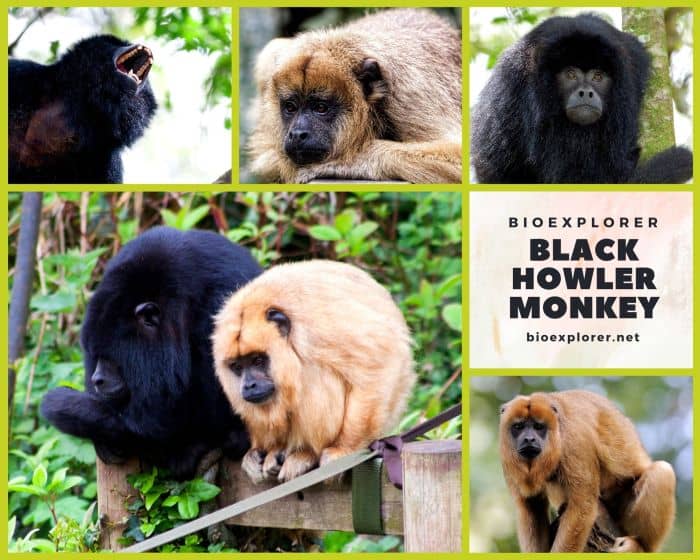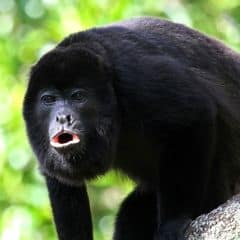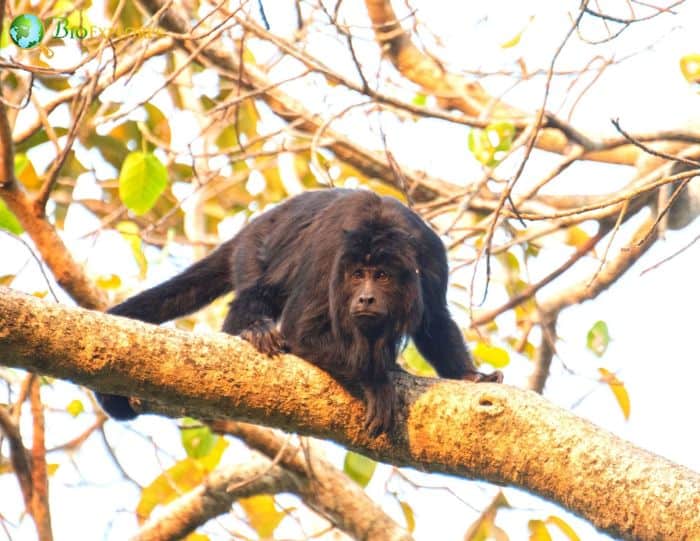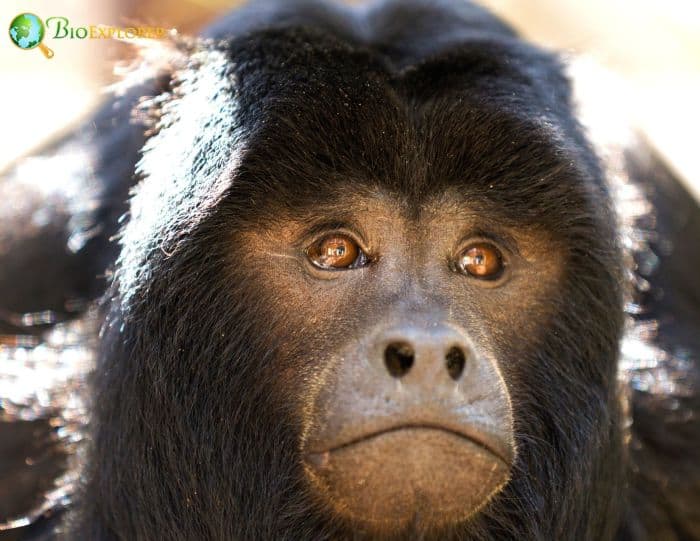
| Animalia | Primates | Atelidae | Alouatta | Alouatta caraya |


- Common Name: Black Howler
- Taxonomy Classification Year: 1812
- Monkey Size: 56 to 92 cm (22 to 36 in)
- Skin Color(s): Black or yellow-brown
- Habitat: Forest and rainforest
- Diet: Herbivorous
- Native Countries: Bolivia, Brazil, Paraguay, Argentina
Black Howler Distribution
Black Howler Monkey Characteristics

Alouatta caraya[1] is found in the tropical rain forests of central South America, extending through eastern Bolivia, Paraguay, southern Brazil, and northern Argentina.
- Alouatta caraya has long and powerful prehensile tails.
- These tails are usually hairless on the underside, allowing them to identify things and be sensitive to touch, like a fifth hand.
- The black face is also primarily hairless, with slightly bushy eyebrows. It has medium-sized brown eyes that are set frontally.
- Like other howler monkeys, they have an enlarged hyoid bone and larynx, which house the vocal tract that produces the characteristic howler.
- However, Alouatta caraya has a less prominent lower jaw and neck than some howler monkeys.
What Do Black Howler monkeys Eat?

Being a herbivore, the Black Howler gets its nourishment from these main plant sources[¶]:
- Ambay pumpwood (Cecropia pachystachya)
- Pequi (Caryocar brasiliense)
- Bastardcedar (Guazuma ulmifolia)
- Sandpaper Tree (Curatella americana)
- Earpod tree (Enterolobium contortisiliquum)
- Mangabeira (Hancornia speciosa)
- Sacky sac bean (Inga laurina)
- Urucuri palm (Attalea phalerata)
- Panama tree (Sterculia apetala)
- Copernicia (Copernicia alba)
- Motoyoe (Melicoccus lepidopetalus)
- Almendro (Dipteryx alata)
- Caskfruit (Doliocarpus)
- Corojo (Acrocomia aculeata)
- Jagua (Genipa americana)
- Paquió (Hymenaea stigonocarpa)
- Sweetwood (Nectandra membranacea)
- River koko (Inga vera)
- Abas (Psidium guajava)
- Fustictree (Maclura tinctoria)
- Shortleaf fig (Ficus citrifolia)
Black Howler monkey Facts
- Alouatta Caraya monkeys are sexually dimorphic, with males weighing an average of 6.7 kg and females an average of 4.4 kg.
- The species practices allomothering, in which other females carry, nurse, and protect babies that are not their own.
- Young males are usually not allowed to touch the babies as they abuse or even maim them.
- They are territorial but only seem to defend their immediate area, and territories sometimes overlap.
- All group members “howl” each morning to inform neighboring groups of their position, probably to maintain distance between groups.
Suggested Reading: Kinds of Monkeys
Cite This Page
APA7MLA8Chicago
BioExplorer.net. (2025, December 28). Black Howler monkey. Bio Explorer. https://www.bioexplorer.net/animals/mammals/monkeys/black-howler-monkey/.
BioExplorer.net. "Black Howler monkey" Bio Explorer, 28 December 2025, https://www.bioexplorer.net/animals/mammals/monkeys/black-howler-monkey/.
BioExplorer.net. "Black Howler monkey" Bio Explorer, December 28 2025. https://www.bioexplorer.net/animals/mammals/monkeys/black-howler-monkey/.











